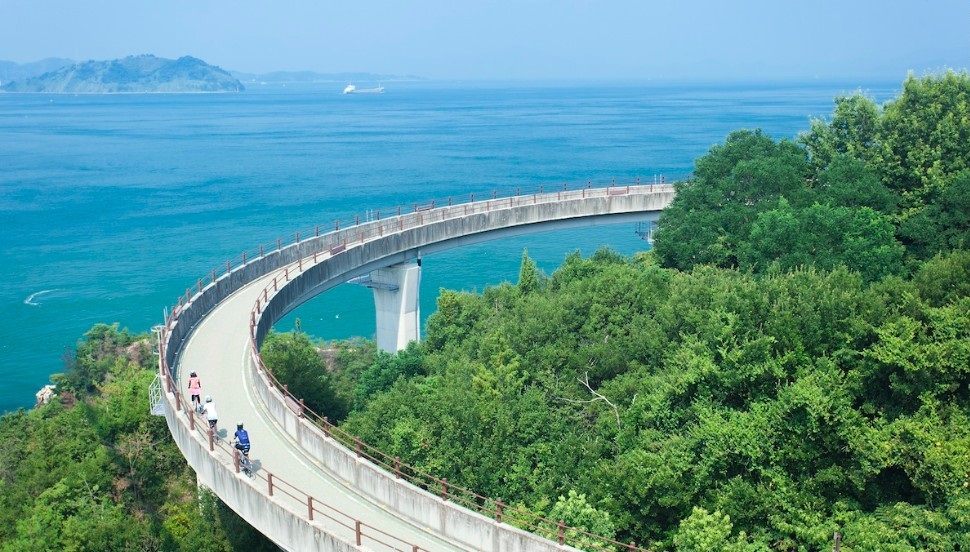Historical Places
There are several historical places in Hiroshima. The Hiroshima castle stands in the center of Hiroshima-city. You can see the old town which was formed in Edo era at Tomonoura in Fukuyama-city and in Takehara-city, but in Hiroshima-city there are few old buildings as lots of buildings were destroyed by the atomic bomb. But some are still showing their toughness – for example, the Old Bank of Japan Hiroshima Branch, the Rest House and so on. Around the peace memorial park, you can see many kinds of statues for praying the victims of the atomic bomb. The whole of Hiroshima can be a textbook of Hiroshima’s history.
The Rest House is another bombed building inside Hiroshima Peace Memorial Park than A-Bomb Dome. Today the house is served as a rest house and information center of the park, but originally it used to be a kimono shop built in 1929. A man who survived the bomb in the basement of the building was the closest survivor to the hypocenter. The building itself still has the trace of those times, and the basement has been preserved as it was at the time of exposure. If you make an advance booking, you can see the basement. Please do visit the Rest House when you come to Peace Memorial Park.

Behind the Omote-Sando shopping street with a lot of visitors going and coming around souvenir shops is a backstreet called Machiya Street. It is a nostalgic avenue with old townscape and preserves the atmosphere of past epoch. There are cafes and art galleries renovated from old folk houses lining the street. If you just walk the street, you would feel as if you stepped back in time. Please take a leisurely stroll around this area, and you could feel the history and culture of Miyajima Island.

Tomonoura is an old port town located in Fukuyama City with more than 1000 years of history. For a long time the port has supported the town as a transportation crossroad of various industries, and it still has the same picture today. The night-light and stepped pier of the harbor have been conserved since Edo Period (1603-1867) and they are actually used as they have been. Around the harbor area is the townscape preserved since those times, drawing droves of tourists strolling along the atmospheric streets. One of the popular souvenirs of Tomonoura is Homei-shu. It is medical liquor famous in this area and said to be effective for sensitivity to cold and fatigue. Taicho-ro which is located next to Fukuzen-ji Temple is a guesthouse built in Edo Period. The picturesque view of the ocean from the house was so marvelous that a Korean envoy marked it as "the most beautiful scenery in Japan". Please take time wandering around Tomonoura and feel the atmosphere and smell of the port town with rich history.

It is the original work performed by Hongo Shin, a sculptor who has been making a number of monuments including " Wadatsumi's statue" all of which are highly expressive of human love, It was founded by Hiroshima City Ladies Union in August 5th of 1960. The bronze statue is the image of a mother, who is trying to overcome difficulties, clinging her child while covering another baby with her left hand.

This bell has been constructed by "A-bomb Victims Hiroshima Higankessho-no-kai Union" on September 20th, 1964. They carved a world map with no borer lines on the bell. This world map symbolizes the slogan of "One world". The bell was designed in a form of a logo expressing the need to ban atomic and hydrologic power, and on the opposite side of the bell, there is a mirror which reflects the inside of one's heart to the sound of the bell. The sound of the bell has been selected as "Japan's best 100 sounds" by Ministry of Environment in 1996.
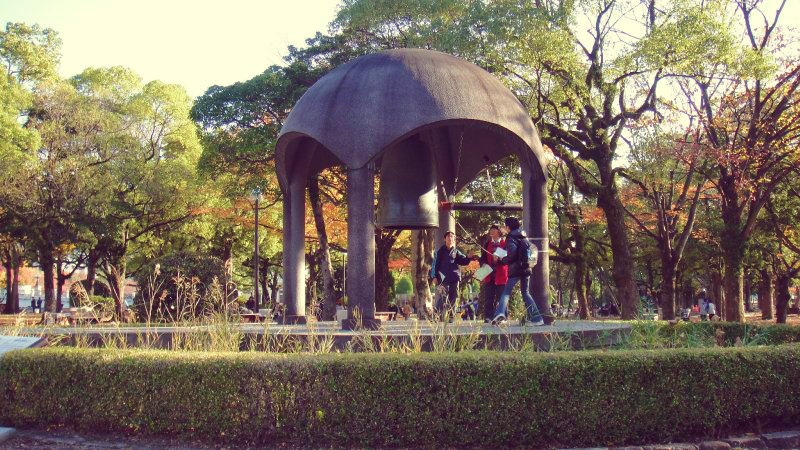
Hiroshima branch of old Japan Bank is founded in the center of the city. The building was established in August 1936 and bears the damages of the war to this very present day. The building stands near ground zero, at a distance of 380m. The strong building structure enabled the bank to sustain its original structure almost perfectly. When the Hiroshima branch moved to Moto town in March 1992, the building was selected as an important cultural property of Hiroshima city. While the bank is engaged in preservation projects and practicing the use of the building, the building is also used to hold events.
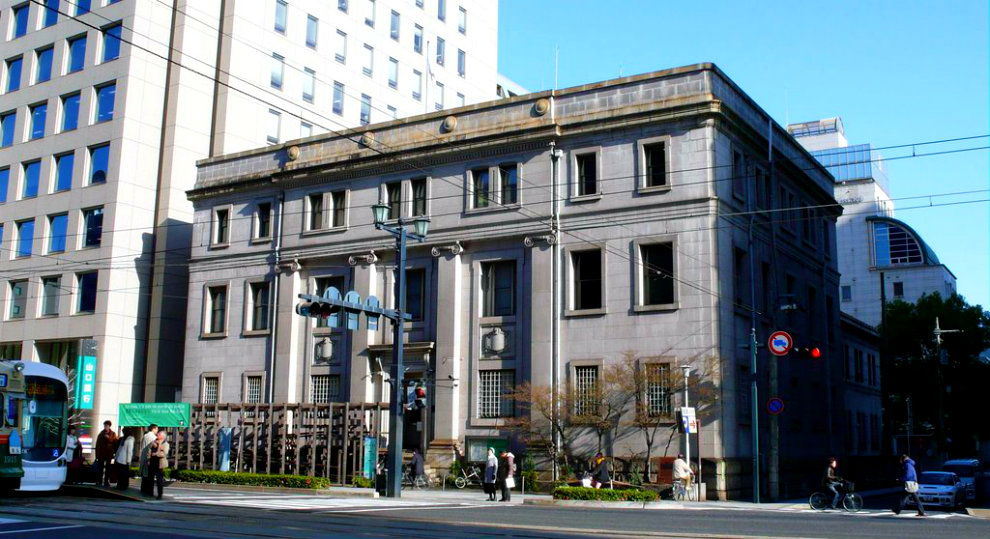
Hiroshima castle is a typical flat castle that was constructed by Mori Terumoto, who was one of the most significant servants ("Godairo") of Hideyoshi Toyotomi. Fukushima family and later Asano family lived there during the Edo era. This castle tower was designated as National Treasure in 1931 (Showa 6). It was destroyed by atomic bomb. Later, the exterior of the castle was renovated in 1958 (Showa 33). In 1989 (Heisei 1st), the inside was restored. Today, it has turned into a history museum featuring Samurai culture.
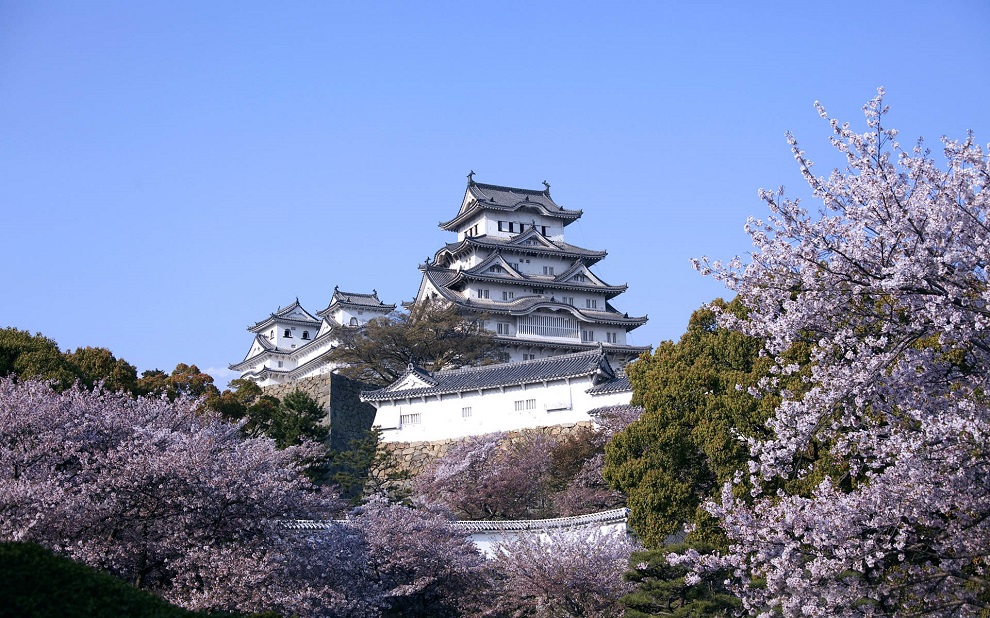
This fire of hope for eternal world peace designed by Tange Kenzo who was the professor of Tokyo University back then has never burned out since August 1st, 1964. The pedestal was designed to suggest two hands pressed together at the wrist and bent back so that the palms point up to the sky. It has become the symbol of Anti-nuclear weapons, sending the following message: "Let's keep burning the fire until nuclear weapon is eliminated from the entire earth".
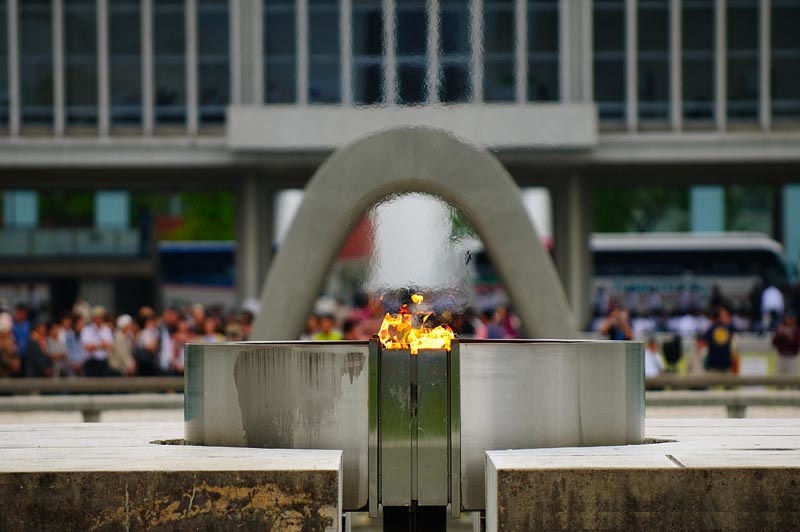
The Seto Inland Sea is very calm like as a lake and you can see a large number of islands. It is warm and dry around this aria, The Seto Inland Sea is sometimes called “the Aegean Sea in Japan”, and the products of citrus fruits prospered. Especially Hiroshima is the best harvest of lemons in Japan. As for Miyajima Island, the Itsukushima shrine is in, so more than three million people visit here per year. The Innoshima Island is in Onomichi-city and it is rare that we can see the only one castle that was built by the Murakami-suigun pirates in the medieval times. And then, the nearest island from the Hiroshima port is the Etajima Island. There are the fields of mikan, the Japanese citrus and mikan picking is popular in autumn. Also, there is the old building of the once Japan Imperial Naval Academy and you can visit and see inside.
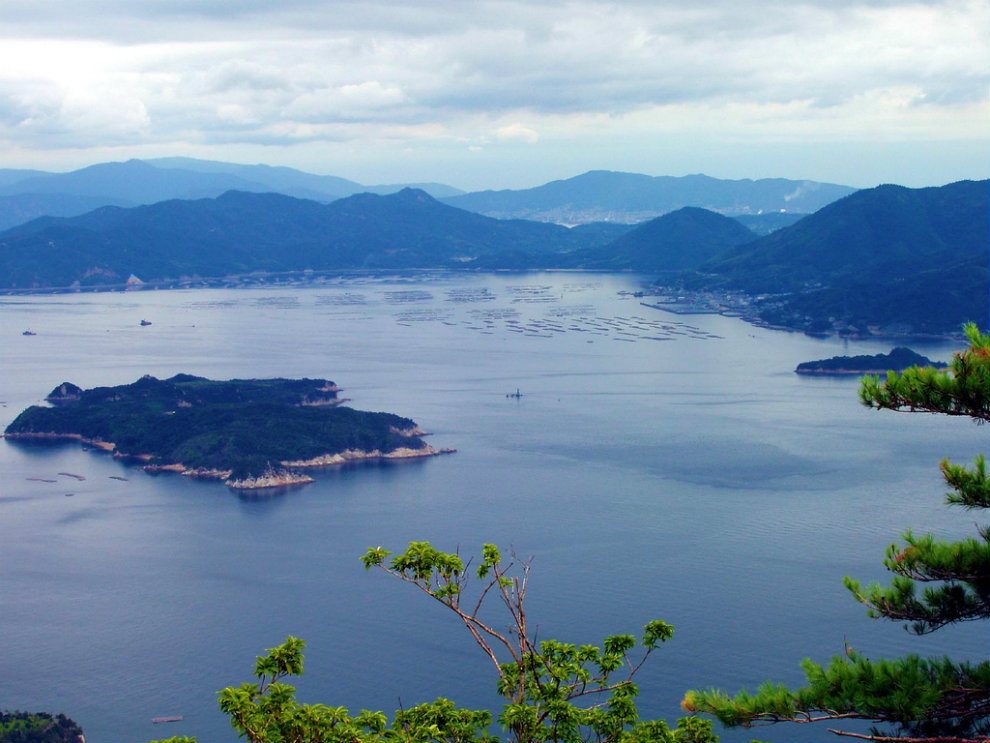
Shimanami Kaido is a 59.4 kilometer-long expressway for cars equipped with a walkway for pedestrians and bicycles. It connects six islands floating on Seto Inland Sea. The road starts from Onomichi City to Mukai-shima, which is in front of Onomichi City, then to Innno-shima and Ikuchi-jima, then enters Ehime Pref. to Omi-shima, Hakata-jima, O-shima and leads to Shikoku Island. Each island is connected with unique bridges with different shapes. Visitors can enjoy a sweeping view of Seto Inland Sea from observatories, and also this is a perfect course for cycling . Each island along the course is blessed with mild climate thanks to surrounding ocean, but has different attractions and sights.
